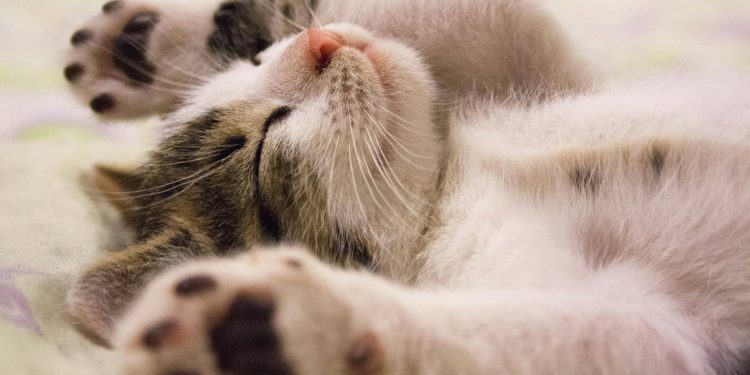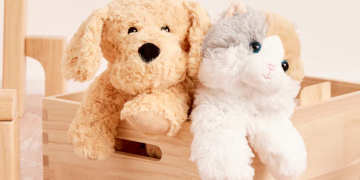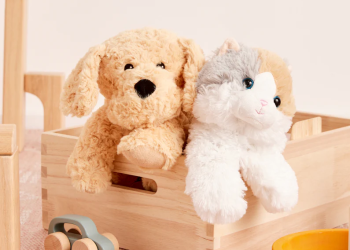Clicker training is a highly effective, positive reinforcement method that helps pets learn new behaviors through clear communication. The “click” sound serves as a marker to tell your pet exactly which action earned a reward, making the learning process faster and more engaging. This guide will walk you through the essentials of clicker training and how to use it successfully with your pet.
Why Clicker Training Works
Precise Communication
The click sound provides an immediate and consistent marker for desired behaviors, eliminating confusion.
Positive Reinforcement
Clicker training focuses on rewarding good behavior rather than punishing undesirable actions, building trust and confidence in your pet.
Versatility
Clicker training can be used for dogs, cats, birds, rabbits, and even reptiles, making it an ideal method for almost any pet.
Getting Started with Clicker Training
Supplies You’ll Need
- A Clicker: A handheld device that makes a distinct clicking sound.
- High-Value Treats: Use small, tasty treats that your pet loves.
- Patience: Consistency and positive energy are essential.
Charge the Clicker
Before training begins, you need to create an association between the click sound and a reward:
- Click and Treat: Press the clicker and immediately give your pet a treat.
- Repeat: Do this 10–15 times until your pet looks for a treat whenever they hear the click.
Teaching Basic Behaviors with a Clicker
“Sit”
- Lure the Behavior: Hold a treat above your pet’s nose and slowly move it back. As they sit, click and reward.
- Add a Cue: Once your pet consistently sits, say “sit” before they perform the action, then click and treat.
- Reinforce: Practice in short sessions, gradually phasing out the treat lure.
“Come”
- Set Up the Scenario: Start in a quiet area with minimal distractions.
- Call Your Pet: Say their name followed by “come.”
- Click and Reward: As soon as they move toward you, click and give a treat.
- Increase Difficulty: Practice in different environments to generalize the behavior.
“Stay”
- Start with a Sit: Ask your pet to sit.
- Introduce the Stay Command: Hold your hand up like a stop signal and say “stay.”
- Reward Small Durations: Click and treat after a few seconds of staying in place. Gradually increase the time and distance.
Advanced Clicker Training Techniques
Shaping
Shaping involves breaking complex behaviors into smaller steps:
- Define the Goal: For example, teaching your dog to lie down.
- Reinforce Progress: Click and reward for incremental movements toward lying down, such as lowering their head or bending their legs.
- Build the Behavior: Gradually require more of the full action before clicking.
Target Training
Target training teaches pets to interact with an object, such as touching a stick or your hand:
- Introduce the Target: Hold out a target object (like a stick) near your pet.
- Click for Interest: Click and reward when your pet shows interest, such as sniffing or touching the target.
- Guide Actions: Use the target to direct your pet to specific locations or perform tricks.
Capturing
Capturing involves clicking and rewarding spontaneous behaviors:
- Watch for natural actions, like your dog lying down or your cat batting a toy.
- Click and reward immediately to encourage repetition.
Tips for Success
Keep Sessions Short
Training sessions should be 5–10 minutes long to maintain your pet’s focus and enthusiasm.
Be Consistent
Use the clicker for every training session to reinforce the association between the click sound and rewards.
Reward Timing
Click at the exact moment your pet performs the desired behavior. The reward can follow a few seconds later.
Use High-Value Rewards
Ensure the treats you use are motivating for your pet. For some, a favorite toy or verbal praise may work as well.
Troubleshooting Common Challenges
Lack of Interest
- Use higher-value treats to capture your pet’s attention.
- Train in a distraction-free environment.
Slow Progress
- Break behaviors into smaller steps and reward incremental progress.
- Be patient and celebrate small victories.
Overuse of the Clicker
- Avoid clicking excessively. Only click to mark specific, desired actions.
Incorporating Clicker Training into Daily Life
House Training
Use the clicker to mark and reward your pet for eliminating in the appropriate spot.
Redirecting Unwanted Behaviors
For example, if your dog barks excessively, redirect their focus to a quiet behavior, like lying on a mat, and click and reward.
Building Confidence
Clicker training helps nervous or shy pets gain confidence by creating a positive and predictable learning experience.
Expanding Skills
Tricks and Fun Behaviors
Use clicker training to teach entertaining tricks like rolling over, spinning, or fetching.
Agility and Sports
Incorporate the clicker to guide your pet through obstacle courses or sports activities like flyball or dock diving.
Problem-Solving Games
Encourage mental stimulation by using clicker training with puzzle toys or games.
Transitioning Away from the Clicker
Over time, you can phase out the clicker once your pet reliably performs a behavior:
- Reward Intermittently: Gradually reduce the frequency of clicks and treats.
- Use Verbal Cues: Replace the clicker with verbal praise or hand signals.
- Maintain Reinforcement: Continue to reward good behavior periodically to keep your pet motivated.
Clicker training is a fun and effective way to teach your pet new skills while building a strong, trusting relationship. With patience and practice, you can unlock your pet’s full potential and enjoy the rewards of a well-trained companion.












